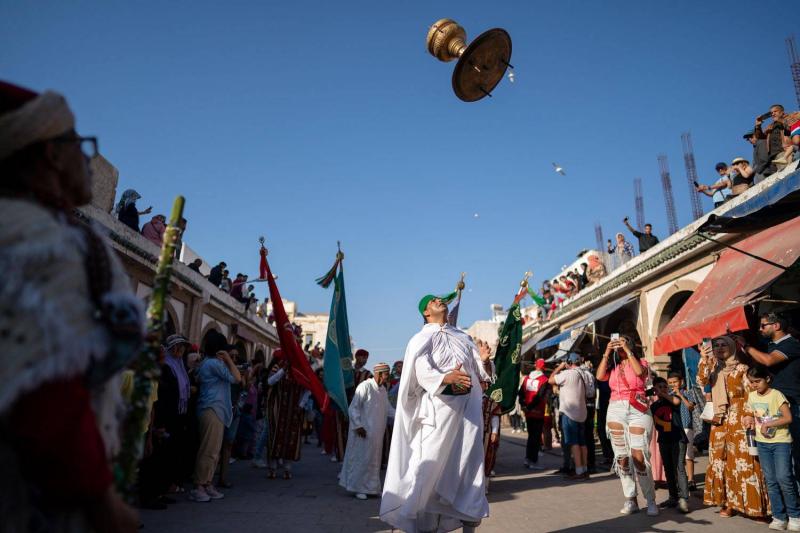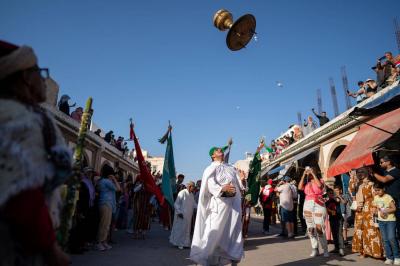Moroccan Gnawa artist Fahd Benchamsi, who participated in the Gnawa and World Rhythms Festival held in Essaouira, 450 kilometers south of Rabat, stated that the blend of Gnawa music, with its African roots, and American blues and jazz revitalizes Gnawa music, making it more audible and widespread. Benchamsi, whose performance attracted thousands of fans of this genre at the historic "Bab Marrakech" tower in the old town of Essaouira, said, "Gnawa music has imposed itself for some time; even the blending with blues and jazz has been around for more than 20 or 30 years." He added in an interview with Reuters, "However, this mixing does not diminish the old traditions of Gnawa that take place during nights and festivals."
Traditionally, Gnawa music nights, which invoke a number of spiritual rituals, are called "Layla" and are closer to mysticism than to art. Researchers and those interested in musical arts assert that Gnawa music originally originated from "the music of slaves" who were transported from Africa to Europe and North America, expressing their wounds, perilous journeys, torture, and longing for freedom and emancipation. Their music carries within its melodies a painful moan and embodies a love for life and a yearning for freedom, challenging the abhorrent notion of slavery.
Researchers contend that the same suffering that gave birth to Gnawa music in North Africa was behind the emergence of "blues" and "jazz" in America, created by people of African descent who were brought there under similar circumstances and for the same purpose of enslavement. Benchamsi remarked, "Gnawa and Afro-American music share the same roots in the era of slavery; some went to North Africa or the Maghreb and created Gnawa music, while others went to America and developed blues and jazz, hence the successful blending of these music genres." He noted that the secret behind the popularity of this music lies in the "shared human genes with Africa."




